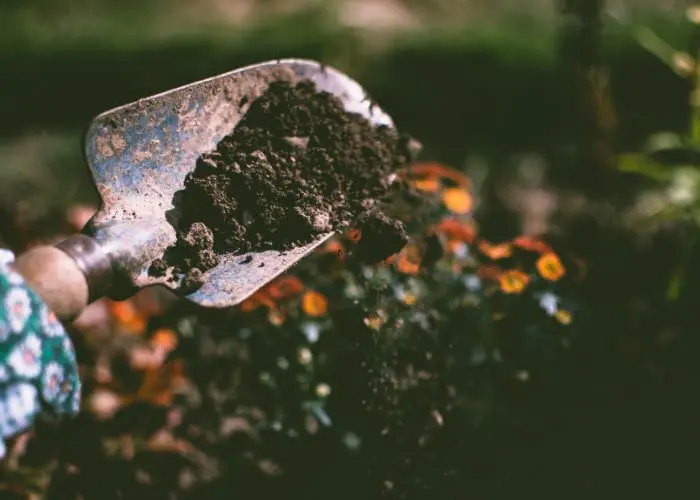 I didn’t have much interest in gardening when I was younger. I have basically been learning as I go since we bought our house in 2013. Prior to that, I had never maintained landscaping beds or attempted to grow a vegetable garden. The extent of my experience was playing in the flower beds of previous rental properties and a few potted tomato plants here and there. To be honest, none of them were exactly successful.
I didn’t have much interest in gardening when I was younger. I have basically been learning as I go since we bought our house in 2013. Prior to that, I had never maintained landscaping beds or attempted to grow a vegetable garden. The extent of my experience was playing in the flower beds of previous rental properties and a few potted tomato plants here and there. To be honest, none of them were exactly successful.
I have learned a lot about gardening from my mother-in-law. She says gardening is “in [her] blood”. Both of her grandmothers were avid gardeners as well. When she first moved to Rochester, she was in the Rochester Gardening Club and was even a Master Gardener for a while. She wanted me to put a disclaimer in here saying that her tips are not endorsed by the Master Gardener Program. It has been close to 30 years since she completed her training and things may have changed since then. Even so, she is a well-trained gardener and we are grateful for her advice.
Here are her TOP GARDENING TIPS (written in my words):
- Water often. She says container plants should be watered daily, while in-ground gardens can be watered less often. Make sure to water deeply to promote root growth that will allow for better drought resistance. In general it should be about 1″ of water per week – including rain. It is best to water in the morning.
- Weed beds early. Weeding will be easier if you catch the weeds before they send out flowers/seeds. There was one summer when my mother-in-law came over and weeded one of my flower beds as my birthday present – best birthday present ever! I had a young baby at home, so weeding the garden was a task rather low on my priority list. She spent many hours getting it cleaned up and by the time she was done, it was beautiful. Make sure to pull the roots when you are weeding, otherwise the weed will just grow back. She used a small hand shovel and rake to get out the roots. I have adopted this technique as well. It really works! (On a side note, I have a neighbor that swears by Preen – it is a weed pre-emergent. I’ll be trying it next year for sure!)
- Fertilize container plants every 2-3 weeks. Both liquid and granular fertilizers have benefits – just follow package instructions.
- Mix up the layout of your garden from year to year. Rotating the placement of your plants will keep your garden soil healthy. Wait at least 3 years between planting varieties from the same family. I found this nice article that outlines garden rotation and plant varieties from the University of Wisconsin-Madison Extension.
- Follow recommended spacing for planting. This is something that I always found confusing. Each plant has details listed on the package for how far apart it should be spaced, and it is best to follow those guidelines to avoid overcrowding. They also make apps that can help you plan out how to best use the space in your garden. I have used (and really like) Planter: Garden Planner (iOS/Google Play).
- Be mindful of pests and diseases. Remove undesirable bugs (i.e. Japanese beetles) and diseased leaves. Bugs can be disposed of in a bucket of soapy water. The UMN Extension has a site to help home gardeners identify diseases in plants: What’s Wrong with My Plant?.
- Remove dead leaves/flowers. The process of removing dead flower heads is called ‘deadheading’. By removing the dead flowers, you will encourage new blossoms to grow in their place. I can remember feeling disappointed when my first potted plant was full of dead flowers. I thought, “Well, now what?!” It wasn’t until my mother-in-law told me how to deadhead that I realized I could grow new, fresh flowers over and over again. I was no longer doomed to look at dead flowers the whole summer. Hooray!
- Cut back plants to get desired shape/size. I was always too scared to cut any plants before. I thought I would kill it by messing with it too much. But I have recently been experimenting with this. By cutting a stem, usually two shoots will grow out in its place. This is a great way to reshape odd looking plants.
- Aim for 2-3″ of mulch in flower beds. Mulch is broken down by sun and weather, so plan for adding more annually. Mulch can be applied to gardens/landscaping beds after weeding and plants are in. If applying herbicide, wait for signs that plants are dying before covering with mulch. Keep mulch away from tree trunks or it may cause decay.
- Take good notes. Keep track of successes and failures. Not every plant will work well in every location. You can take photos of containers or combinations that worked well. Sometimes a good garden is just trial and error.
- Refer to reliable resources. Some of my mother-in-law’s favorite resources are University of Minnesota Extension and Crockett’s Victory Garden Book. She suggests signing up for UMN’s Yard and Garden News for up-to-date information.
- Be daring enough to try. This wasn’t one of my mother-in-law’s tips. I added it because I feel like in order to learn more about gardening, we just need to be daring enough to start. I once overheard my father-in-law reassure someone else about their lack of gardening skills by saying, “Plants die at our house too.” Some plants will die whether or not you are well-educated like my mother-in-law. But you won’t see which ones live if you don’t try. So, go ahead – try it. Be a ‘plant mom’.

